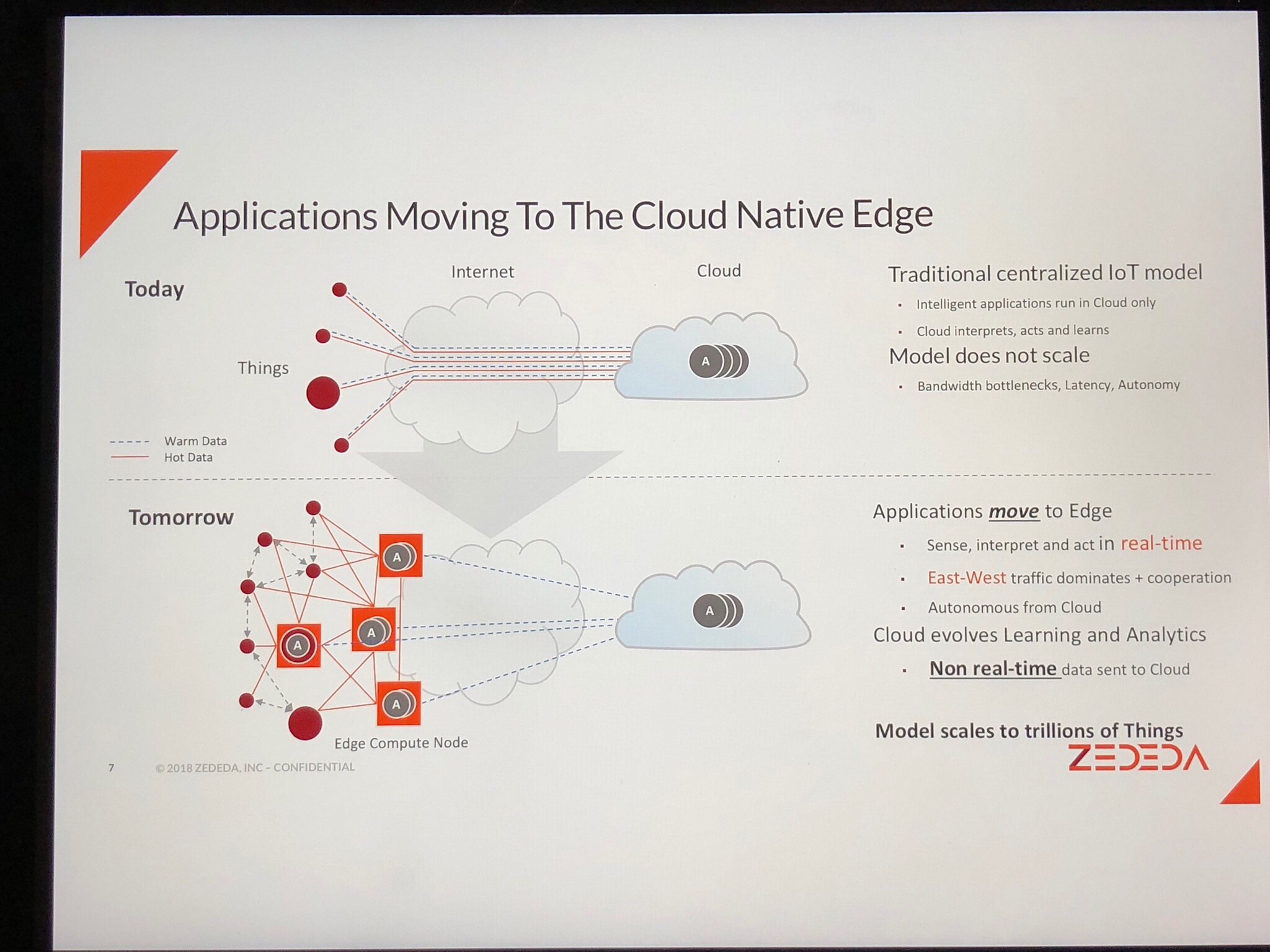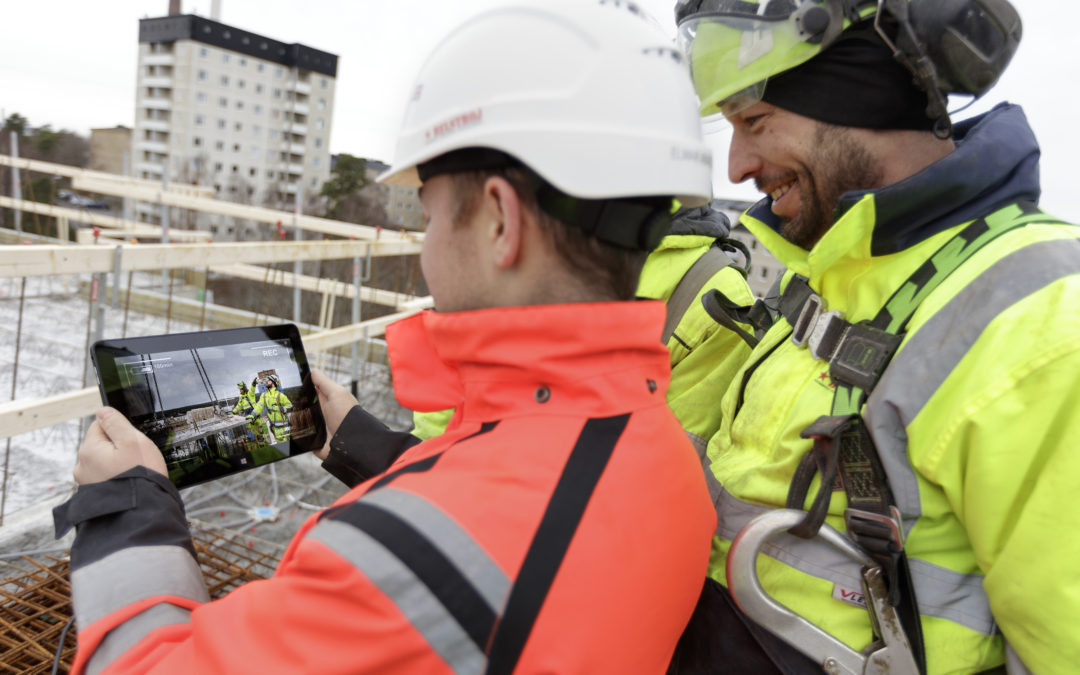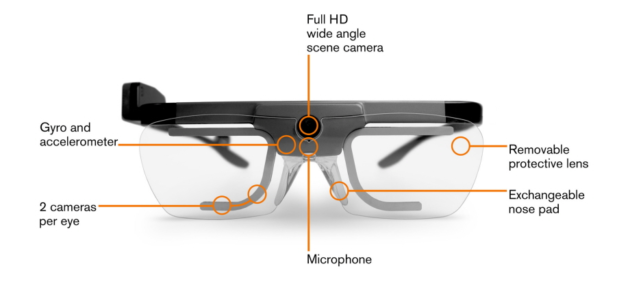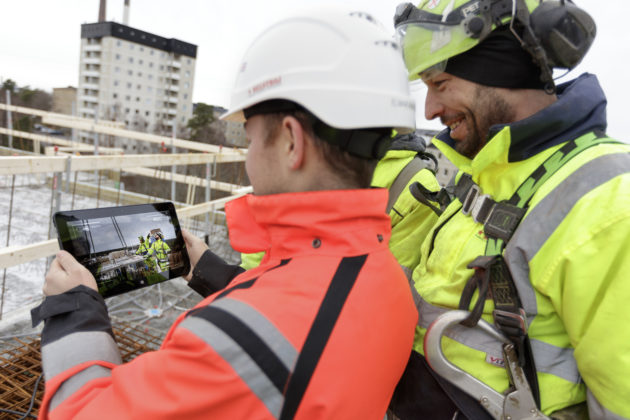
by Gary Mintchell | Apr 13, 2018 | Education, Productivity
Just give them a pencil and paper and let them write whatever comes to mind with no thought of spelling, grammar, or coherence. We don’t want to squelch a child’s creativity.
I’ve heard this “advice” until I am sick of it.
Study any artist. Especially the great (and creative) ones. They all learned, usually through a teacher and mentor, the basics of color, proportion, composition, and anatomy. The creativity came with using the basics in new ways–seeing things others had not. Picasso was great as a “realistic” painter, but then he decided to try to find the essence of the object or person he was painting. He pushed the boundaries with cubism.
You could pick up a guitar and start strumming and picking. Or–you could learn sounds and notes. Tune the guitar. Learn some basic chords. You only need to learn D-C-G and you can play hundreds of rock and folk songs. Just experiment different rhythms within the pattern. Maybe try an added note–go ahead, throw in a C-9 to the progression. If you only learned C-A minor-F-G, you could play around with the progression and play another hundred early rock songs. You’re only truly creative when you can build on the foundation of what works.
Writing is communication. Humans have known just about since the dawn of communication about logic. When you are expressing something, it must proceed logically. Spelling helps us convey the correct word (and it helps if you turn off autocorrect on your iPad, for example). Grammar helps us express a clear idea. Try the book “Eats Shoots and Leaves” or is it “Eats, Shoots, and Leaves”.* Do you get the different meanings? Logic helps us lead our reader to understanding.
We do the same thing in automation or software. We know the essentials of if-then-else logic or arrays or programming APIs. We build on them to construct systems.
No, it’s not “creativity” that we need to worry about in that way.
The real crime is when we kill a child’s (or an adult’s) curiosity.
I love this little poem from Rudyard Kipling:
I have six honest serving men. They taught me all I knew. There names are What, and Where and When; and Why and How and Who.
*There is a story about a Panda who walks into a bar. He orders a sandwich and eats it. He then pulls out a gun and shoots the bartender. He left. Lying on the bar was a field guide to Pandas where an editor had inserted a fatal comma.

by Gary Mintchell | Apr 12, 2018 | Internet of Things, Manufacturing IT, Software
The Internet of Things ecosystem is changing computing in almost a seismic shift. But like geology, it builds up over time and then the event happens before you know it.
We had centralized, on-site computing revolutionized by PCs. We networked PCs and wound up with centralized computing in the cloud. Demands from building the Internet of Things (or Industrial Internet of Things for us manufacturing and production geeks) expose the flaws of cloud computing. The next hot thing—edge.
Yesterday the CEO/co-founder of Zededa talked with me about the computing platform his company is building with no less a mission than to build the largest computing company on Earth without owning infrastructure. Its vision—create a new edge economy that allows applications to run anywhere.
Some of what follows may sound familiar. I’ve talked with many companies doing a piece of what Zededa has laid out, but none are as audacious as this.
In brief, Zedeta…
- Closes $3.06M in Seed Funding
- Pioneering a secure, cloud-native approach to real-time edge applications at hyperscale for solutions ranging from self-driving cars to industrial robots
- Built a team comprised of distinguished engineers from top tech companies in cloud, networking and open source to solve the edge computing puzzle and disrupt the status quo
- Seed round was led by Wild West Capital; other investors include Almaz Capital, Barton Capital and Industry Veteran Ed Zander, former CEO of Motorola and former COO of Sun Microsystems

“Tomorrow’s edge computing environment that enables digital transformation will be distributed, autonomous and cooperative. The edge is complex and not only has to scale out securely, but simultaneously must become friendlier for app developers. That’s the problem we are solving at ZEDEDA,” stated ZEDEDA CEO and Co-Founder Said Ouissal. “It will require a drastic shift from today’s embedded computing mindset to a more secure-by-design, cloud-native approach that unlocks the power of millions of cloud app developers and allows them to digitize the physical world as billions of ‘things’ become smart and connected.”
ZEDEDA will use the funding for continued research and product development, investment in community open-source projects for edge computing as well as further investment in sales and marketing initiatives. ZEDEDA investors include Wild West Capital and Almaz Capital, whose funding was part of a broader group investors, some of whom also invested in IoT/edge companies Theatro and Sensity Systems (now Verizon).
In the coming wave of pervasive computing, real-time apps, cyber-physical systems and data services such as machine learning and analytics will become commonplace. ZEDEDA envisions an open ecosystem and a completely new technology stack that creates a service fabric essential to achieving the hyperscale that will be required in edge computing.
To realize that goal, ZEDEDA has pulled together a distinguished roster of industry veterans from legendary technology companies with expertise in areas of operating systems, virtualization, networking, security, blockchain, cloud and application platforms. This unique blend of skills combines with the team’s deep connections to core open-source projects and standardization bodies. The team’s work has directly contributed to software and system patents as well as industry standards used by billions of people around the world today.
“A new paradigm and massive innovation is needed to meet demand for IoT and edge computing,” said Kevin DeNuccio, Founder of Wild West Capital and ZEDEDA’s lead investor. “Massive shifts in technology, including the proliferation of IoT, paves the way for industry disruption, which large incumbents tend to inhibit. Disruption takes a combination of an entrepreneurial team with a very unique set of collective experience, groundbreaking ideas, and the ability to garner immediate traction with global industrial leaders, who can transform their business with machine learning and artificial intelligence delivered by the Edge connected IoT world. ZEDEDA is simply one of the most promising edge computing startups out there.”
“Operations Technology teams face major challenges when it comes to fully realizing the advantages of an IoT world. Their worlds are becoming massively connected systems dealing with virtualization, networking and security,” stated Christian Renaud, Research Director, IoT at 451 Research. “Our recent research shows that while OT teams have the application plans for leveraging IoT, the vast majority of organizations’ IT resources and capabilities are maxed out. This leaves open the question of how these edge applications and IoT will scale out without compromising security or taxing resources even further in the future.”
Ouissal told me, “Edge is the next big wave, bigger than cloud, simply because of the sheer size of the number of devices. The goal is ubiquitous compute where applications want to interact real-time. The problem with the cloud is that it’s centralized. This ecosystem is truly Cyberphysical—just like your Industry 4.0.”
The current IoT model of sending all data to the cloud for processing, won’t scale due to:
- Bandwidth
- Latency
- Privacy issues
Three problems that the company is attacking:
1. Moving apps now running in the cloud to the edge
2. Edge-to-edge communication, key for autonomous systems, peer-to-peer
3. Security, cloud requires cyber security, but at the edge we must add physical security—someone could walk in and carry out an intelligent device
Ouissal often mentioned the need to rethink management of the edge. There exists a big difference between managing cloud and edge. Zedeta is tacking the variety of management challenges for updating and managing thousands to millions of embedded devices.
Solutions the team are developing include:
1. Security-built on platform, use keys, trusted, health check with every plug in, embedded virtualization
2. management-virtualization->can run multiple sessions on a device, eg robot motion on one session and analytics on another all on same embedded system, can scale this to millions of devices
3. Networking-monitor, watch lists, anomaly detection, analyze why, VPN architecture
This is all fascinating. I can’t wait to talk with competitors and potential competitors in a couple of weeks in Hannover and during some upcoming trips to get responses.

by Gary Mintchell | Apr 11, 2018 | Podcast
I’ve published another podcast. Despite the many dystopian views of technology, automation, and robots in the future, it is human decision making and leadership that determines what will happen. Gaurav Bhalla’s “Awakening a Leader’s Soul” teaches a different perspective on leadership.
You can subscribe on Apple Podcasts, Overcast, or any other podcatcher. You can also subscribe to my YouTube channel and get the video edition. If you like my thoughts, please give me a good rating on your source.

by Gary Mintchell | Apr 10, 2018 | Commentary, News
The industrial market—including both manufacturing / production companies and their suppliers—is experiencing continued consolidation through mergers and acquisitions as companies seek to grow and don’t see an organic alternative. This is true, not only in the US, but also globally according to data and analytics company GlobalData.
The Asia-Pacific (APAC) region’s share in the global mergers & acquisition (M&A) deals jumped to 31.6% in the fourth quarter (Q4) of 2017, a sharp rise from the 5% recorded in the previous quarter. According to GlobalData’s latest report, ‘Smart Money Investing in the Consumer Packaged Goods Industry in Q4 2017’, strong growth in APAC’s emerging economies offers a potential goldmine of opportunities to players in the CPG industry.
M&A deals in the region are primarily driven by the growing demand for healthy and convenient food and drinks amidst rising health consciousness and increasing income levels. Major players in the region are taking M&A route to expand their geographic presence as well as increase product portfolio to broaden their reach in potential new markets. For instance, ThaiBev acquired a 75% stake in Myanmar Distillery Company and Myanmar Supply Chain and Service, in an effort to expand its overseas reach to other Asian countries, while Zhejiang Huatong Meat Products acquired 100% stake in Xianju Guangxin Food to expand its portfolio.
The food sector accounted for 54% of M&A Deals in Q4 2017, followed by the beverages sector, which accounted for 31% during the same period, according GlobalData’s analysis on sector-wise investments.
The VC funding (VCF) activity took a dip in Q4 2017 compared to Q3 2017 in terms of value. North America recorded the highest share of 73%, while APAC recorded 15% of total value of the activity in Q4 2017. Investing in emerging technologies was the major factor driving VCF activity. For example, China-based Greybox Coffee managed to raise US$15mn through Series A Funding, capitalizing on the growing coffee culture in China, a predominantly tea drinking nation; while FYRE, a one-shot energy drink brand, managed to raise US$500,000 in seed funding.
Most of the PE investments registered in Q4 2017 were focused on companies planning to expand their product offerings, especially in the food industry, suggesting the ability of these companies to focus on creating products that meet evolving consumer preferences. For instance, Korea-based Sung Gyung Food secured funding from Standard Chartered Private Equity, allowing the investor to capitalize on the strong demand for seafood snacks in South Korea.

by Gary Mintchell | Apr 9, 2018 | Automation, Safety
From in-store shopper research to evaluating the gaze of an expert pianist, thousands are using wearable eye trackers to accurately measure what people see as they move freely in a range of real-world settings.
However, the design of the eye trackers has excluded certain sports and sectors from using the technology to its full potential due to the restrictions caused by protective headwear.

That is, until now. Two new versions of Tobii Pro Glasses 2 have been developed to fit easily under helmets and safety accessories, allowing athletes, industrial workers and other professionals to participate in eye tracking research. By moving the processor box below the temple the Helmet edition facilitates the use of most safety equipment while the Integration edition can be purpose fitted to most headwear thanks to it’s reduced frame and movable processor box.
Expanding the benefits of eye tracking for sports research
As sports become increasingly more competitive, athletes need to stay ahead of the game. To do so, many coaches are opting to make cutting edge technologies like eye tracking an integral part of their evaluation and training programs.

The beauty of eye tracking is that it reveals methods and techniques which occur instinctively or too quickly to be observed. Basketball, golf, and tennis are just a few of the sports utilizing wearable eye trackers to compare the visual strategies of experts and novices in a bid to identify the best techniques and fine-tune strategies.
William Rahm, a goalie coach with the Swedish Hockey League, is using eye tracking glasses to train his goalies. According to him, one of the greatest challenges as a coach is being able to understand what a player sees on the ice. Being able to watch in real-time how a goalie tracks the puck with their eyes and scans the ice during a game will help him expedite training and translate subconscious actions into, teachable strategies.
The new editions of these wearable eye trackers open up increased possibilities for this growing area of eye tracking research in sports.
Design improvements are delivering increased research opportunities across a range of sports like cricket, American football, and baseball as headgear limitations are greatly reduced or removed.
Improving safety in the workplace with eye tracking
Changes to the physical specifications of wearable eye trackers is also increasing the applications of their use to improve workplace safety. By seeing operations through the eyes of workers, management can gain greater insight into inefficient processes, distractions and unsafe conditions.

This is an important area for all. The University of Nebraska used wearable eye trackers to investigate the nature of human error on construction sites and their underlying causes. Their findings, about the importance of situational awareness, yielded a reliable model for predicting human error and preventing subsequent injuries on construction sites. This model can be used by safety managers to identify at-risk workers and prevent potentially fatal situations, which is of particular relevance to those in the sectors like mining and manufacturing.
There’s an increased scope for eye tracking research which is accompanied by other measures of human behavior. Through its recent integration with Qualisys, a provider of motion capture technology, it’s possible to access combined real-time output of both eye tracking and motion data. This provides essential information needed to further improve sports performance, diagnose visual-motor disorders, and much more.











